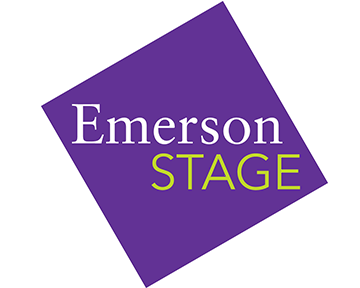“Why did the Plague kill half my friends? AND WHAT HAPPENED TO THE MOON?” | A Message from the Dramaturg
By McKennen Campbell, Dramaturg (Marisol)
Marisol – Spanish, derived from “María de la Soledad” (Mary of solitude). Marisol can be directly broken down to “Mar y sol,” which means sea and sun.
“Why did the Plague kill half my friends? AND WHAT HAPPENED TO THE MOON?”
José Rivera’s writing creatively employs magical realism, a narrative form seen in influential literature from Latin America that combines the supernatural with social and political realities. A prominent figure who implemented magical realism in his stories was Gabriel García Márquez, who later became Rivera’s mentor at the Sundance Theatre Institution. Márquez’s influence is present in Marisol; in the play, such symbols as the moon and guardian angels manifest both the imagined and lived experiences of 2021. Social and political realities can be seen through how twenty-six-year-old Marisol navigates through the questions and fears she has for the future of her community in New York City. Marisol encounters misunderstandings and intolerance variously around poverty, sexism, exploitative media, sickness, death, friendship, and revolution. The people she encounters privately and publicly take her on a journey to address her fears and answer her questions. The supernatural, social, and political are omnipresent in this play, which makes Marisol’s journey captivating. In the rehearsal room, we always had the space and creative freedom to bring our identities to the characters present in this story.
Our incredible guest director Tatyana-Marie Carlo intentionally cast the story of Marisol with all women of color and non-binary people of color. Originally, Rivera wrote a few roles in the story as white characters, but with the relationship between the text and current events, it gives us an opportunity to tell this story through the perspective of women of color and non-binary people of color. Rivera writes in consideration of those whom he centers across his body of work, and enables the wonderful artists on this production to tell a story for us, by us. I applaud this direction as it showcases how women of color are not a monolith and presents the range of who they are and their artistry. I deeply respect that this production is offering a model for Emerson Stage, cast in a way that combats methods of casting that only place BIPOC artists when the character is written to be played by a Black, Indigenous, or person of color.
“We’re at the part of history where everything breaks down”
In response to the many concerns that people within and outside of the Performing Arts Department have had about the shows we produce, students of color recently organized a week of action that included a list of demands that can help our departments address the racial inequities we face on campus. I am extremely grateful for my experience on this production, as it was one where I felt like my artistry as a Black dramaturg was appreciated. Beyond Marisol, Emerson Stage needs to actively strive for diversity, equity, and inclusion in how and what stories are told. It should not require a student like me, involved in the week of action, to acknowledge this. Regarding our productions, there is still a lot of work to be done when it comes to representation onstage and offstage: what does it mean to tell a story through a Latinx lens when the production team is predominantly white? This is at no fault to the artists working on the show, but rather a question of the demographics in our department that we need to address through a thorough analysis of our admissions process: consider the intersections between race and wealth in admissions fees. Especially as we present adaptations, contemporary plays, classical plays, musicals, and new works, it is important to note that Black, Indigenous, and people of color exist in every part of our world, and have made endless contributions to the theatrical art form and practice. In previous productions, BIPOC artists have been tokenized or have been subject to racial harm in the rehearsal process. Through working on Marisol, it has been an environment that embraced artists of color at this school, and a show like this should be the base level for greater representation and true diversity in an Emerson Stage production. What we showcase needs to reflect the values that we claim to have and need to be presented with care, consideration, and purpose.
“my ability to read about the misery of the world and not lose a moment out of my busy day”
I enjoyed this rehearsal process of Emerson Stage’s production of Marisol as it was one of true collaboration, and one that enabled me and other artists to interact with this text through wide-ranging perspectives. In the digital rehearsal room, we discussed how this show made us feel through different senses such as smell, taste, sight, sound, and touch. In that same week, we individually shared how this play relates to issues, ideas, and events we see today and worked to answer why this show needs to be told for us, by us, and right now.
Emerson Stage’s production of Marisol will take place LIVE online on February 18 through 21. More information and tickets are available at emersonstage.org/marisol.
